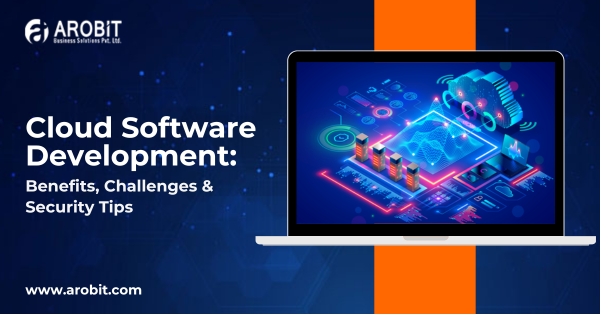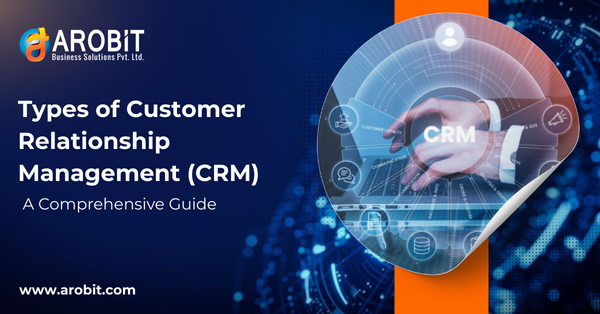In 2025, cloud computing will provide top-class services for software development. As per the latest statistics, more than 90% of companies across the world rely on cloud-based solutions for application development, ERP systems, and CRM platforms. This change is all about needing something that can grow easily, doesn't cost a lot, and can be set up quickly. A leading technology analyst firm reported that companies utilizing cloud software development have seen their productivity grow by 30% compared to those relying solely on traditional means. Doing things in the cloud can lead to cybersecurity problems and operational issues too.
As organizations switch to the use of cloud-based development environments, it is important to understand the pros and cons to ensure success. In this blog post, we’ll discuss these aspects in detail. We will also present actionable security measures to make your cloud application development safer.
What is Cloud Computing?
Cloud computing refers to the process of using a network of remote servers hosted on the Internet to store, manage, and process data, rather than a local server or a personal computer. With this model, organizations can create reliable cloud-based development environments that meet their requirements.
The characteristics of cloud computing include:
- Data Storage and Management: Store huge volumes of data securely and access it easily.
- Device Access and Networking: Connect multiple devices seamlessly through the internet.
- Cybersecurity Solutions: Protect sensitive data with enhanced security measures.
When we rely on something, it makes the adjustments a lot easier. By using these, businesses can develop great apps without worrying about the infrastructure.
Service Models in Cloud Computing
Cloud computing provides three main service models that support different business requirements.
Software as a Service (SaaS)
- SaaS provides web applications managed by providers.
- Users can access these applications remotely through subscription-based pricing.
- Examples include popular tools like Google Workspace and Salesforce.
Platform as a Service (PaaS)
- PaaS offers a remotely accessible environment for developers.
- It bypasses the need for expensive Integrated Development Environments (IDEs).
- Includes middleware tools and operating systems that streamline application development for the cloud.
Infrastructure as a Service (IaaS)
- IaaS delivers core services like servers, storage, and networking on demand.
- This model helps adjust company resources and provision new applications based on actual usage.
- Payment is typically based on resource consumption, making it cost-effective.
The different types of cloud computing service models enhance the ERP cloud computing and CRM in cloud computing for various industries and sizes of companies.
Cloud Deployment Models
When moving toward the cloud, organizations have three different cloud deployment models available to them based on their needs.
- Public Cloud: Open and available to all users; the user's services are owned and managed by external third-party providers. Generally, public clouds are a lower-cost option. However, there are always some security risks associated with a shared public cloud environment.
- Private Cloud: Designed for a single user or business, all hardware is dedicated completely to that person or organization. The user can rely on the security features of the hardware being completely private and built for the user or business. This model is often more customizable to the user's needs.
- Hybrid Cloud: Utilizing both public and private as useful, this model provides flexible adaptability. The business hosts its applications in security while utilizing the cost-saving measures that public clouds afford businesses.
Each of these provides its advantages and disadvantages for their respective models in ERP cloud computing and CRM in cloud computing because it allows for flexibly adapting to the industry at hand.
Benefits of Cloud Software Development
Cloud-based software development offers numerous advantages that make it an attractive option for businesses.
Scalability
The ability to easily adjust resources like memory or CPU without physical hardware constraints allows organizations to scale operations quickly as demand fluctuates.
Cost-efficiency
With no upfront investments required for hardware, businesses can adopt a pay-as-you-go pricing model that aligns costs with actual usage. This financial flexibility is especially beneficial for startups and small enterprises.
Disaster Recovery
Cloud solutions often include automatic backups that ensure data protection in case of system failures or disasters. This capability is far more effective than traditional on-premise setups.
Fast Provisioning of Resources
Our fast provisioning of resources means we get instant availability of testing environments. As a result, the development cycles will speed up. Consequently, the developers will get to focus on coding instead of waiting for infrastructures to be set up.
Collaboration
Cloud-based development environments make it easy for teams in different locations to work together. Tools like Slack or Microsoft Teams are integrated into these environments for better communication.
Wide Geographic Reach
By connecting globally distributed workforces through optimized server loads, organizations can ensure consistent performance regardless of where their teams are located.
Easy Deployment
Automated operations help test cycles happen faster, while testing environments don’t get outdated. Developers can quickly deploy new updates in response to market or user demand due to the efficiency of automated operations.
These benefits make cloud-based software development environments ideal for modern software development companies aiming to stay competitive in an ever-evolving market landscape.
Cloud Software Development Challenges
While it has numerous benefits, cloud development is not without challenges that organizations need to overcome:
Interoperability
Maintaining code compatibility across several providers might be complicated. Developers might have a hard time when moving code from one environment to another or combining services from different vendors.
Performance Issues
Physical server location can affect user experience to a large extent. Organizations need to plan out the locations of data centers carefully and do end-to-end testing to have the best performance.
Scalability Limitations
Though cloud offerings guarantee scalability, this can be restricted either by the provider's capability or pre-defined limits within their offerings. Organizations need to examine provider capacity thoroughly before committing.
Reliability Concerns
There is no promise of always-available services with any cloud provider. Organizations are required to keep service use under close observation to recognize potential downtime threats in advance.
Security Risks
The web delivery model introduces specific challenges to application security. The developers have to put extra effort towards securing connections outside the browser to safeguard valuable data from leaks.
Addressing these challenges is critical for successful ERP implementation in cloud computing environments as well as CRM systems that rely on robust data management practices.
Measures Developers Should Take to Secure Software in the Cloud
To minimize risks during cloud software development, developers must undertake these important practices:
Define Governance Policies
Formulating lucid governance policies offers direction in security practices as well as security requirements alignment by in-house security across all teams undertaking development in the cloud.
Segment Networks
Segmenting networks into smaller pieces aids in controlling security threats efficiently by limiting lateral movement for attackers who might compromise one segment but not all.
Automate Security Processes
Using automated code analysis and configuration management tools enables teams to react immediately to potential threats while ensuring high levels of quality assurance throughout the development cycle.
Perform Vulnerability Management
Routine scanning for, analyzing, and reporting vulnerabilities via penetration testing guarantees possible vulnerabilities are being remediated before exploitation by bad actors.
Audit Security Practices Regularly
Performing periodic checks of security policies guarantees that they are current in their protection against changing threats while determining what needs to improve or be realigned based on new knowledge learned over time.
Through the rigorous execution of these steps within their workflows, developers can protect their projects from possible breaches while still ensuring operational efficiency in their software development processes.
FAQs
Q1. What does cloud mean in software development?
A1. Cloud means applying internet-based resources for developing applications effectively without depending explicitly on physical hardware configurations that demand huge maintenance efforts in the long run.
Q2. What does a cloud software developer do?
A2. A developer designs scalable applications tailored exclusively for applications in different kinds of clouds while making them interoperable across platforms via compliance with best practices set within industry standards.
Q3. What are the four cloud computing types?
A3. The four most important ones are public clouds (public access), private clouds (single-use), hybrid clouds (blended), and community clouds, which are specially made to cater specifically to commonalities within certain groups/organizations, collaborating mutually on a collective aim/objective of commonality they share among them as a group in its entirety.
Conclusion
Cloud-based software development has transformed the way applications are designed, deployed, and maintained by providing scalability, cost-effectiveness, and accelerated cycles. However, issues such as interoperability and security threats need to be addressed with careful planning and sound practices to achieve success in ERP implementation or CRM systems based on efficient data management strategies within these platforms today!
By utilizing strategies like automation in conjunction with network segmentation successfully throughout their processes, thoroughly executed consistently over the years, developers release total potential building within this dynamic space with confidence while protecting projects from dangers presented by the constantly changing environment around us all today!








